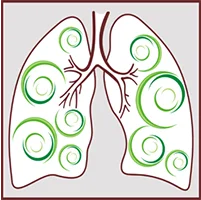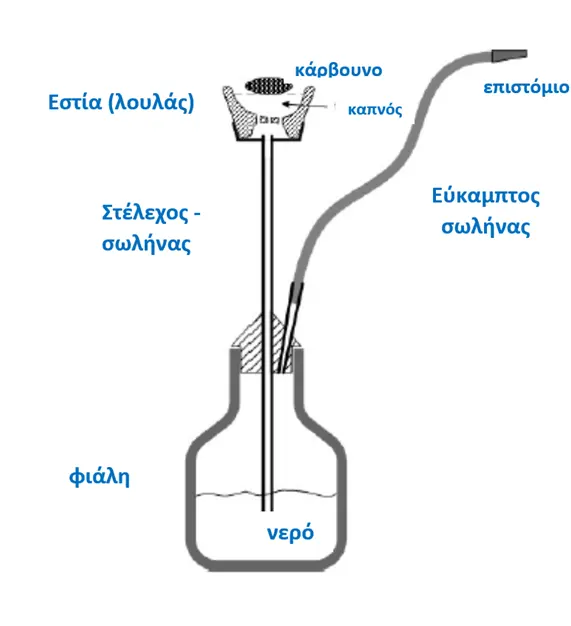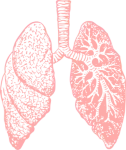Hookah (Shisha): Is it as Innocent as We Think?
A widely popular smoking product, especially among young people, is the hookah. Its prevalence has been contributed to by its impressive design for many, but primarily by the misguided belief that it is another 'safe smoking' option! Let's see what the reality is.
The Basic Parts of a Hookah
The glass sphere (flask)
The metal stem - pipe
The bowl - typically clay (head)
The flexible hose (hose)"
How it Works
In the hookah, the metal stem from the bowl extends into the glass jar filled with clean water. The tobacco, along with pieces of lit charcoal, is placed in the bowl.
As the smoker inhales through the hose (which is also connected to the jar), it creates suction inside the jar, which is then transferred to the bowl through the stem.
This way, the smoke from the burning charcoal is transferred through the stem into the water and then through the hose to the smoker.


Health Effects
An alarming trend…
Undoubtedly, it is a particularly prevalent smoking product, especially among young people. Studies in the United States have shown that despite the overall decrease in smoking habits in recent years, it is estimated that 1.2% of high school students and 4.1% of college students smoked hookah in the previous month (of the study)!
Moreover, 2.6 million adults smoked hookah in 2017, while a study in 2018 found that 14.7% of college students had used hookah in the past!
Health Concerns and Impacts
Hookah, despite creating an image of innocence, poses a significant health risk to its users. During its use, smokers inhale large amounts of smoke containing high levels of toxic substances such as nicotine and other chemical compounds.
Studies have shown that inhaling smoke from a hookah can have similar effects to cigarette smoking, including cancer, pulmonary diseases, and cardiovascular problems.
Additionally, sharing a hookah with others can increase the risk of transmitting infections, while passive smoking from a hookah affects non-smokers as well, raising concerns for public health.
The widespread recognition of the risks associated with hookah smoking requires educational campaigns and policy actions to protect public health and inform the public.
Historical Overview
Turkey, India, Pakistan
Hookahs have been used to smoke tobacco and other substances by indigenous peoples of Africa and Asia for at least four centuries.
According to a historical source, the hookah was invented by the “healer” Hakim Abul Fath during the reign of Emperor Akbar (1556-1605) as a less harmful smoking method.
This “healer” believed that the smoke passing through the water becomes less harmful. Therefore, the widely held but unsubstantiated belief that hookah smoking is less harmful than cigarette smoking is as old as the hookah itself.
Its use is widespread mainly in Arab countries, Turkey, India, Pakistan, but in recent years, with globalization, it has spread to many other countries in Europe and the USA.
In the last century, hookah use was limited and was characteristic of elderly men in bazaars and coffeehouses of Eastern countries. Today, it has become a trend mainly among young people.
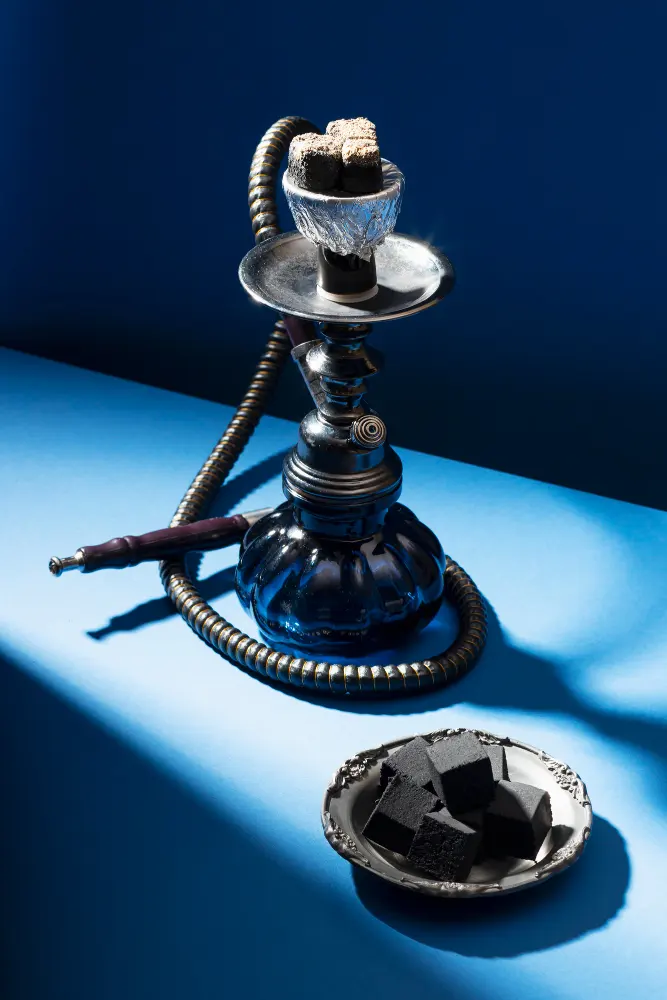
The Impact of Hookah on Our Health
Contrary to ancient literature and common belief, the smoke emerging from the hookah contains numerous toxic substances that cause addiction and serious diseases such as lung cancer, heart diseases, etc.
Specifically, at least 82 toxic chemicals and carcinogens have been found in hookah smoke!
Users of the hookah inhale as much smoke as someone smoking 100 or more cigarettes!
The hookah produces the addictive substance nicotine, resulting in users becoming addicted as often as with conventional cigarettes. It has even been found that the hookah can expose the smoker to more smoke for a longer duration compared to smoking a cigarette.
For example, during the 5-7 minutes it takes to smoke a cigarette, smokers typically take 8-12 puffs of 40-75ml each, resulting in inhaling 0.5-0.6 liters of smoke.
Typical hookah use lasts 20-80 minutes, during which the smoker takes 50-200 hookah puffs ranging from 0.15 to 1 liter each.
Therefore, hookah users inhale as much smoke as someone smoking 100 or more cigarettes!
In this way, hookah smokers take in over 1.7 times more nicotine compared to a cigarette as the water only absorbs a small portion of it.
They are thus exposed to a sufficient dose of this drug, resulting in addiction even in occasional users. Adolescents should not forget that nicotine has harmful effects on their brain development.
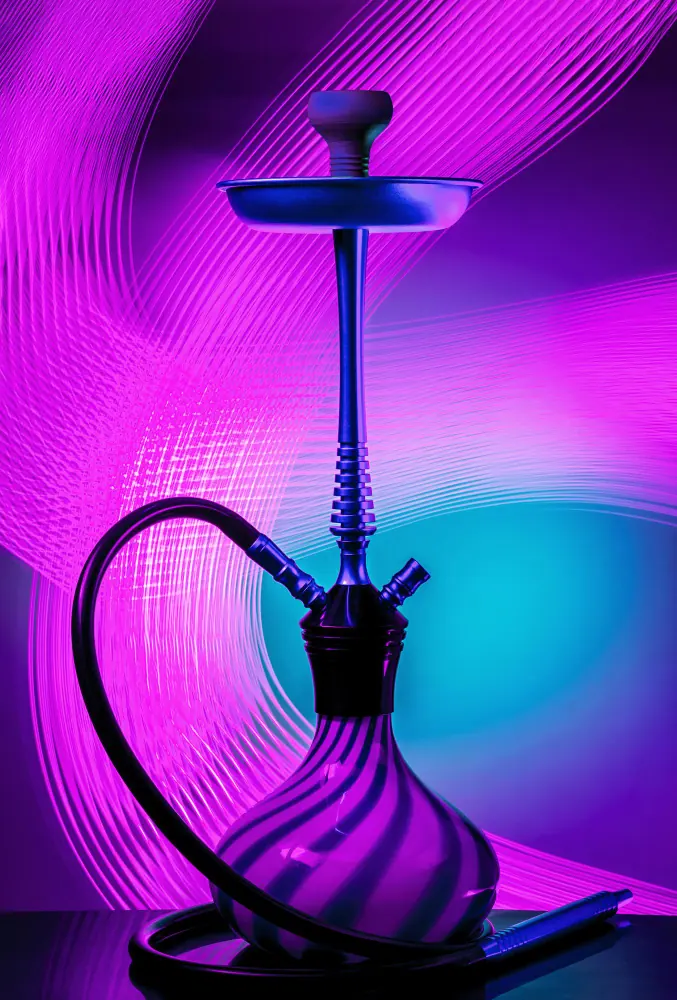
During inhalation, carbon monoxide as well as carcinogenic substances such as heavy metals and other chemicals enter the body…
Hookah users inhaling higher amounts of smoke expose themselves to higher levels of chemicals and harmful gases that cause cancer and other diseases.Studies have shown that during inhalation, toxic gases such as carbon monoxide are released, as well as carcinogenic substances such as heavy metals and other chemicals (e.g., tar).
During hookah use, the smoker inhales over 9 times more carbon monoxide compared to smoking a cigarette!
This puts hookah users and passive smokers at a significant risk of the same diseases as conventional cigarettes, such as lung cancer and other organ cancers, cardiovascular diseases (heart attacks, strokes), respiratory diseases (chronic obstructive pulmonary disease, worsening of asthma), as well as significant adverse effects during pregnancy.

Let’s not forget that sharing the mouthpiece of the hookah exposes the smoker to a significant risk of disease transmission such as tuberculosis, hepatitis, and viral infections (such as flu and COVID-19).
Hookah smoke is often sweetened and flavored to make it more attractive. The sweet smell and taste of the smoke may explain why some people, especially young ones who wouldn’t otherwise smoke, start using hookah, essentially becoming smokers.
It’s no coincidence that in the USA there was a 32% increase in hookah use among high school students between 2011-2012, while a study in 2014 showed that 79% of young people aged 12-17 reported smoking hookah because they liked the taste!
It’s another means that contributes to the spread of smoking habits rather than cessation
Conclusions
The increasing popularity of hookah among younger generations worldwide is a phenomenon that concerns public health experts.
- The use of hookah poses a significant health risk to smokers and those exposed to the smoke it produces.
- A typical one-hour hookah session leads to inhaling 100 to 200 times more smoke volume compared to a conventional cigarette, containing high levels of nicotine and toxic elements that are not “filtered” through water.
- Hookah use is not a safe alternative to conventional smoking.
- There is no evidence that any device or component can make hookah smoking safer.
- Even sharing the mouthpiece of a hookah exposes the smoker to a significant risk of infectious disease transmission.
- The appealing aroma of hookah and the mistaken belief that it is safe are reasons why many young people become smokers.
- Passive smoking from hookah poses a significant risk to non-smokers.
Hookah is not harmless and should be regulated by legislation in the same way as conventional cigarettes and all tobacco products, as it is equally harmful as conventional smoking. It is no coincidence that this tobacco product, like other newer products such as electronic cigarettes and IQOS, are marketed for commercial reasons as less harmful to health.

